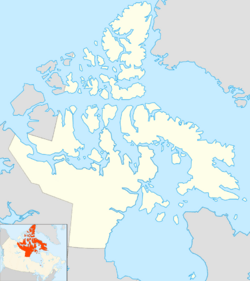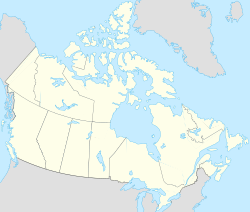Gyrfalcon Islands facts for kids
| Geography | |
|---|---|
| Location | Ungava Bay |
| Coordinates | 59°05′N 68°57′W / 59.083°N 68.950°W |
| Archipelago | Arctic Archipelago |
| Total islands | Over 200 |
| Area | 150 km2 (58 sq mi) |
| Administration | |
|
Canada
|
|
| Nunavut | Nunavut |
| Region | Qikiqtaaluk |
| Demographics | |
| Population | Uninhabited |
The Gyrfalcon Islands are a group of over 200 small islands in Nunavut, Canada. These islands are not home to any people. They are part of the Qikiqtaaluk Region and are located in the western part of Ungava Bay.
The islands are found north of Quebec's Ungava Peninsula. They are about 19.7 kilometers (12.2 miles) northeast of Leaf Bay. Nearby islands include Tiercel Island and Qikirtajuaq Island to the southwest. The closest community is Kuujjuaq, an Inuit village about 120 kilometers (75 miles) to the southeast.
Exploring the Geography of the Gyrfalcon Islands
The Gyrfalcon Islands are arranged in long lines that run from the northwest to the southeast. The area has very strong tides and is open to the sea. The coasts have tall cliffs and rocky shores.
Plants and Life: Flora of the Islands
Plant life on the Gyrfalcon Islands is not very dense. However, you can find special tundra plants away from the shore. These plants are tough and can grow in cold, harsh conditions. Some examples include:
- Arctic willow
- Crowberry
- Sedges
- Mosses
- Lichens
Wildlife Wonders: Fauna of the Gyrfalcon Islands
The Gyrfalcon Islands are a very important place for birds. They are recognized as a Canadian Important Bird Area (site #NU028). This means the islands provide a safe home for many bird species.
- One notable bird found here is the Common Eider. This is a large sea duck known for its soft down feathers.
During the summer months, large marine mammals called Walrus often visit the waters around the islands.



